As Wok Fried Chicken Lazy Dog takes center stage, this opening passage beckons readers into a world crafted with culinary expertise, ensuring a reading experience that is both delectable and distinctly original. Join us as we delve into the tantalizing realm of this beloved dish, exploring its origins, ingredients, preparation techniques, and the myriad ways it tantalizes our taste buds.
From its humble beginnings to its current status as a culinary sensation, Wok Fried Chicken Lazy Dog has captured the hearts and palates of food enthusiasts worldwide. Its versatility and adaptability make it a staple in kitchens across cultures, inspiring countless variations and interpretations.
Whether you prefer a classic rendition or a contemporary twist, this dish promises an unforgettable gastronomic adventure.
Wok Fried Chicken Lazy Dog Overview
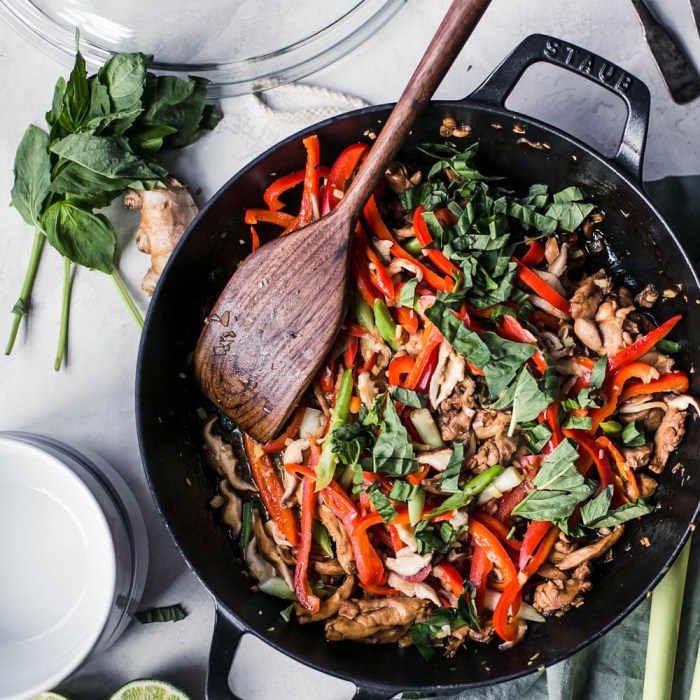
Wok fried chicken lazy dog is a dish that combines the flavors of wok-fried chicken with the ease of a lazy dog. It is a quick and easy way to make a delicious and satisfying meal. The chicken is marinated in a flavorful sauce and then cooked in a wok until it is crispy and golden brown.
The lazy dog part comes from the fact that the chicken is not breaded or fried, which makes it a healthier and less time-consuming option.
Variations of the Dish
There are many different ways to make wok fried chicken lazy dog. Some popular variations include:
- Using different types of chicken, such as boneless, skinless chicken breasts, thighs, or drumsticks.
- Marinating the chicken in different sauces, such as soy sauce, teriyaki sauce, or hoisin sauce.
- Adding different vegetables to the wok, such as broccoli, carrots, or onions.
- Serving the chicken with different sides, such as rice, noodles, or vegetables.
Ingredients and Preparation
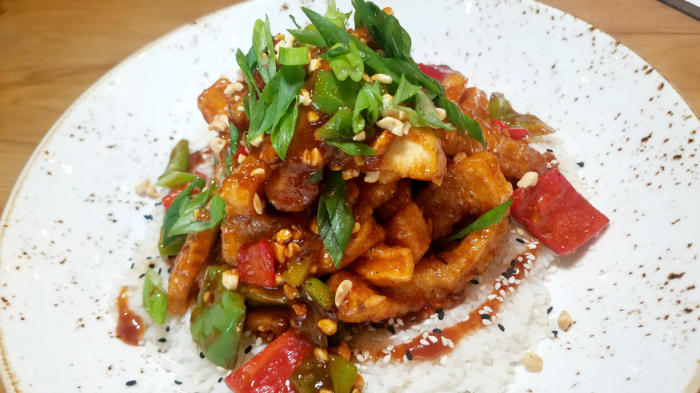
Wok fried chicken lazy dog, a culinary masterpiece, tantalizes taste buds with its crispy exterior and succulent interior. To recreate this delectable dish at home, gather the following essential ingredients:
- Boneless, skinless chicken breasts
- Cornstarch
- Soy sauce
- Ginger-garlic paste
- Sesame oil
- Green onions
- Vegetable oil
Prepare your wok for a culinary adventure:
- Cut chicken breasts into bite-sized pieces.
- In a bowl, combine chicken, cornstarch, soy sauce, ginger-garlic paste, and sesame oil. Mix thoroughly.
- Heat vegetable oil in a wok over medium-high heat.
- Add chicken to the wok and stir-fry until golden brown and cooked through.
- Garnish with green onions and serve immediately.
Tips for Perfection
Achieving the perfect texture and flavor for your wok fried chicken lazy dog is an art. Here are some tips to elevate your culinary creation:
- For a crispy exterior, ensure the chicken is coated evenly in cornstarch.
- Use a well-seasoned wok to enhance the flavor.
- Stir-fry the chicken in batches to prevent overcrowding and ensure even cooking.
- Do not overcook the chicken, as it will become tough.
- Experiment with different sauces and seasonings to create your own unique flavor profile.
Cooking Techniques
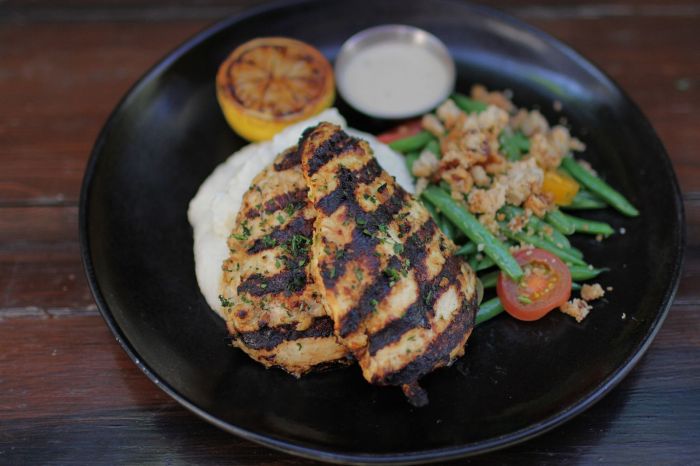
Wok fried chicken lazy dog employs various cooking techniques to achieve its distinct flavors and textures. Understanding these techniques and their effects can help you select the optimal method for your desired outcome.
Stir-Frying
Stir-frying involves cooking ingredients rapidly in a preheated wok with a small amount of oil. The constant stirring ensures even cooking and prevents sticking. This technique imparts a crispy exterior and tender interior to the chicken, while also enhancing the flavors of the accompanying vegetables and sauces.
Deep-Frying
Deep-frying submerges the chicken in hot oil until golden brown. This method creates a crispy, crunchy exterior that contrasts with the juicy meat inside. Deep-frying is suitable for achieving a particularly crispy texture, but it can also result in higher fat content.
Pan-Frying
Pan-frying involves cooking the chicken in a shallow layer of oil in a skillet. This technique provides a compromise between stir-frying and deep-frying, offering a moderately crispy exterior and tender interior. Pan-frying is a versatile method that allows for greater control over the cooking process.
Choosing the Best Technique
The choice of cooking technique depends on your preferences for texture and flavor. If you desire a crispy exterior and tender interior with minimal oil absorption, stir-frying is recommended. For a particularly crispy texture, deep-frying is suitable. Pan-frying offers a balance between crispiness and tenderness, providing greater control over the cooking process.
Flavor Profiles
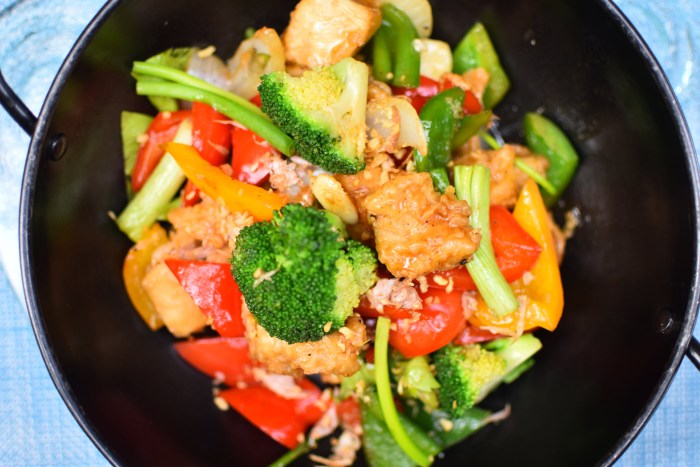
Wok fried chicken lazy dog boasts a symphony of flavors that tantalize the taste buds. From the aromatic spices to the savory sauce, each ingredient plays a crucial role in creating this delectable dish.
The base flavor profile is a harmonious blend of sweet, salty, and umami. The sweetness comes from the natural sugars in the chicken and the addition of honey or sugar. Saltiness is achieved through soy sauce and oyster sauce, while umami richness is derived from fermented ingredients like fish sauce and shrimp paste.
Spice Symphony
Spices add a vibrant dimension to the flavor profile. Ginger and garlic provide a pungent warmth, while star anise and cinnamon lend a subtle sweetness and complexity. Chili peppers bring a welcome touch of heat, adjustable to personal preferences. The combination of these spices creates a tantalizing aroma that fills the air.
Sauce Sensation
The sauce is the crowning glory of wok fried chicken lazy dog. It coats the chicken in a luscious glaze, adding both flavor and moisture. The sauce typically consists of soy sauce, oyster sauce, honey, and sesame oil. The balance of these ingredients creates a rich and savory sauce that complements the crispy chicken perfectly.
Customizing Flavors, Wok fried chicken lazy dog
The beauty of wok fried chicken lazy dog lies in its versatility. The flavor profile can be easily customized to suit personal tastes. For a sweeter dish, add more honey or sugar. If you prefer a spicier version, increase the amount of chili peppers.
Experiment with different spices and sauces to create your own unique flavor combination.
Presentation and Serving
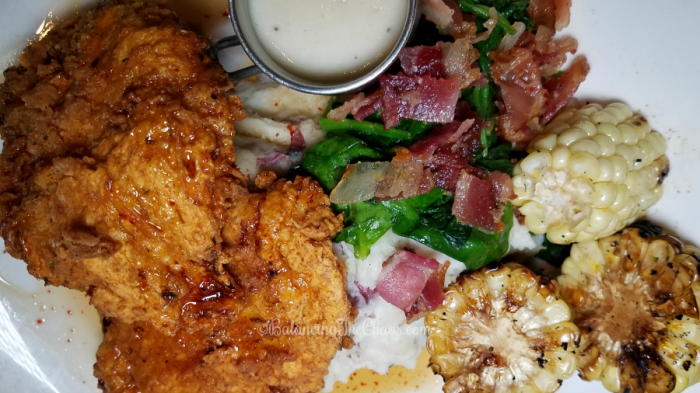
Wok fried chicken lazy dog is traditionally presented on a large plate or platter, with the chicken arranged in a mound in the center and the sauce drizzled over the top. The dish is often garnished with green onions, cilantro, and sesame seeds.
For a more creative and visually appealing presentation, you can try arranging the chicken in a ring around the edge of the plate, with the sauce in the center. You can also use different colors of vegetables to create a more vibrant dish.
For example, you could use red bell peppers, green onions, and carrots.
Suitable Side Dishes and Accompaniments
Wok fried chicken lazy dog is a versatile dish that can be served with a variety of side dishes and accompaniments. Some popular options include:
- Rice
- Noodles
- Vegetables
- Egg rolls
- Spring rolls
You can also serve wok fried chicken lazy dog with a dipping sauce, such as soy sauce, hoisin sauce, or sweet and sour sauce.
Nutritional Value
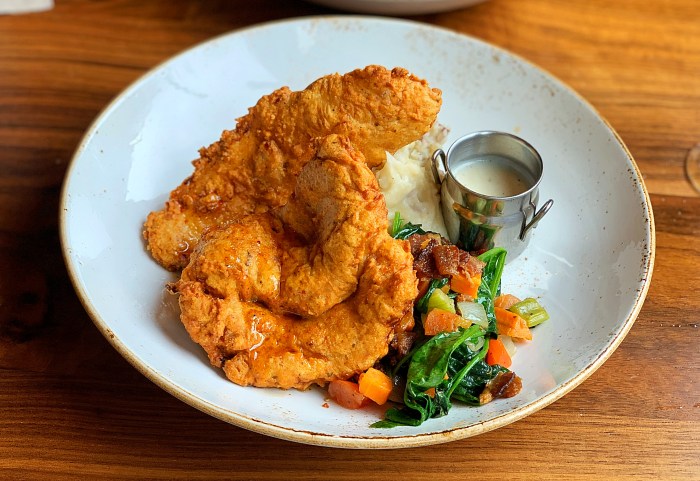
Wok fried chicken lazy dog is a high-calorie dish with a moderate amount of protein and low carbohydrates. It is a good source of essential vitamins and minerals, including iron, zinc, and vitamin B12.
Macronutrients
A typical serving of wok fried chicken lazy dog contains approximately:
Calories
Wok fried chicken lazy dog, a dish that is sure to tantalize your taste buds. But hold on a second, let’s do a quick math break. Do you know what percent of 371 is 120? Click here to find out.
Now, back to our culinary adventure, wok fried chicken lazy dog is a delectable combination of flavors that will leave you craving for more.
500-600
Protein
25-30 grams
Carbohydrates
15-20 grams
Fat
25-30 grams
Micronutrients
Wok fried chicken lazy dog is a good source of several essential vitamins and minerals, including:
Iron
Important for red blood cell production
Zinc
Essential for immune function and wound healing
Vitamin B12
Necessary for the production of red blood cells and DNA
Health Benefits and Considerations
Wok fried chicken lazy dog can be a part of a healthy diet when consumed in moderation. The protein content helps promote satiety and muscle growth, while the vitamins and minerals support overall health and well-being. However, it is important to note that the dish is high in calories and fat, so it should be consumed in moderation as part of a balanced diet.
Cultural Significance
Wok fried chicken lazy dog holds cultural significance in various regions, tracing its roots to culinary traditions and local customs.
Originating in Southeast Asia, this dish has spread to other parts of the world, adapting to diverse culinary practices and cultural preferences.
Origins and Historical Context
The exact origins of wok fried chicken lazy dog remain uncertain, but it is believed to have emerged in Southeast Asia, particularly in countries like Thailand, Cambodia, and Vietnam.
Historically, wok fried chicken lazy dog was a staple dish in rural areas, where it was prepared using locally available ingredients and cooking techniques.
Role in Different Cultures and Cuisines
In Thailand, wok fried chicken lazy dog is known as “pad kra pao gai,” and is a popular street food dish. It is typically served with rice and a fried egg.
In Cambodia, it is called “kdam chaa moo,” and is often served with a dipping sauce made from fish sauce, lime juice, and chili peppers.
In Vietnam, it is known as “com ga xao bo,” and is typically served with a side of pickled vegetables and a bowl of soup.
FAQs
What is the origin of Wok Fried Chicken Lazy Dog?
The exact origins of Wok Fried Chicken Lazy Dog are shrouded in mystery, but it is believed to have originated in China during the Ming Dynasty.
What are the key ingredients in Wok Fried Chicken Lazy Dog?
The essential ingredients for Wok Fried Chicken Lazy Dog include chicken, vegetables (such as onions, peppers, and carrots), soy sauce, oyster sauce, and ginger.
What are some tips for achieving the perfect texture and flavor in Wok Fried Chicken Lazy Dog?
To achieve the perfect texture and flavor, marinate the chicken for at least 30 minutes before cooking. Use a well-seasoned wok and heat it over high heat. Cook the chicken in batches to prevent overcrowding and ensure even cooking.